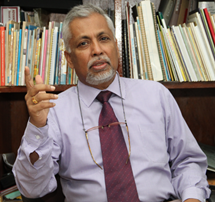‘High Fertility and Population Growth in the Asia-Pacific Region’, Research Symposium, Department of Demography, University of Colombo, December 2014
‘High Fertility and Population Growth in the Asia-Pacific Region’, Research Symposium, Department of Demography, University of Colombo, December 2014
Abstract:
This paper attempts to examine the relationship between high fertility and population growth in the Asia-Pacific region in the context of present population dynamics in that region. This study uses the data sources available from the UNESCAP for the Asia-Pacific Region. The study reveals that the major contributors to the declining growth rate in the Asia-Pacific region are South-East Asia, South and South-West Asia and East and North-East Asia. However, the study further shows that nearly half of the countries are still to achieve replacement level of fertility. It is also shown that majority of the countries are still at the late expanding stage of the demographic transition. Most importantly, the opportunity for the demographic dividend has passed in some countries but in others, still prospect exists to harness its potential. Furthermore, the growth momentum generated by the high level of historical fertility is responsible for continuous population growth despite the substantial reduction of fertility. In this context, the paper suggests three important policy considerations: adopt appropriate policies to harness Demographic Dividend to reap the benefits of a low dependency; adopt policies to reduce adolescent fertility for improving sexual and reproductive health and the social and economic well-being of adolescents and youth; and address the unmet need for family planning by adopting rights-based approaches which can lead to greater equity, equality and nondiscrimination.

